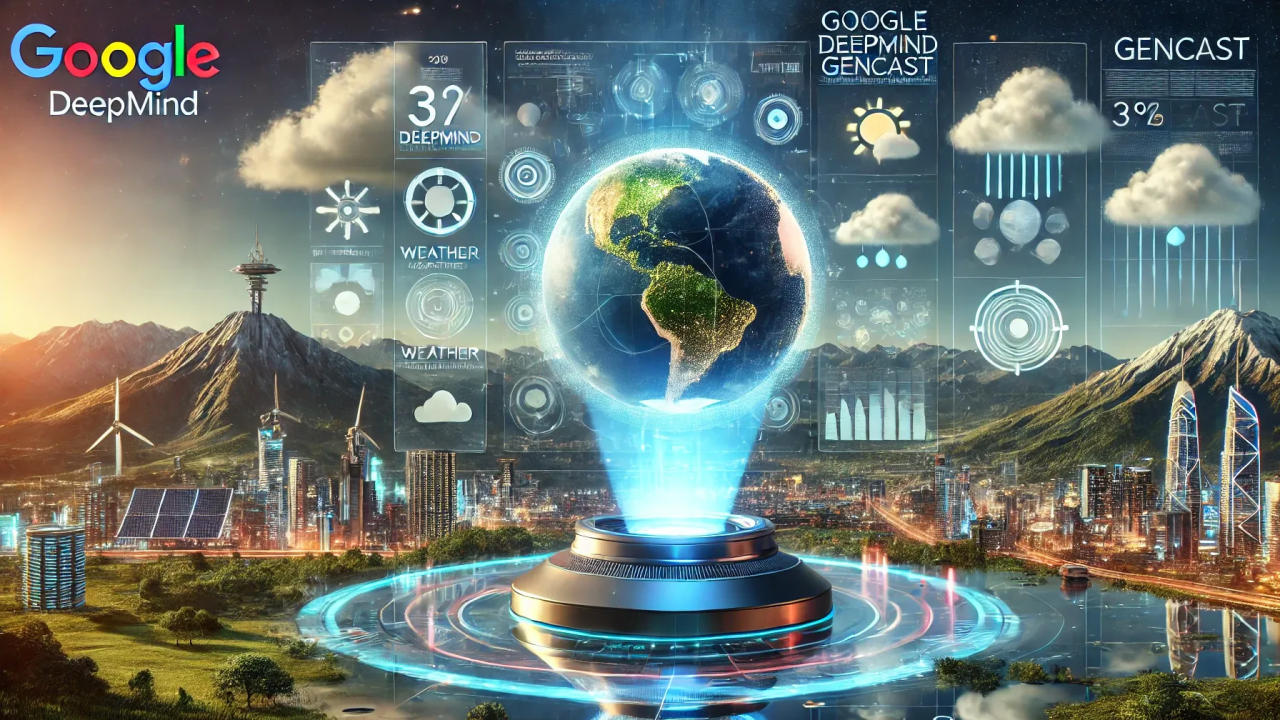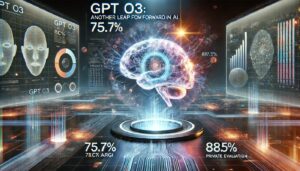In the world of weather forecasting, accuracy and precision are crucial for everything from everyday planning to disaster preparedness. Recently, Google has introduced a groundbreaking new tool in the form of GenCast AI, a system designed to revolutionize weather forecasting with the power of artificial intelligence. This development is poised to offer more accurate, real-time forecasts by leveraging AI and machine learning algorithms, setting the stage for a major transformation in how we understand and predict weather patterns.
What is Google’s GenCast AI?
Google’s GenCast AI is a cutting-edge weather prediction system that utilizes machine learning, deep learning, and large-scale data analysis to deliver more accurate and granular weather forecasts. Unlike traditional weather forecasting methods that rely heavily on physical models, GenCast AI integrates vast amounts of weather data, including satellite images, historical weather patterns, and real-time environmental data, to generate more precise and dynamic predictions.
The system is designed to continuously learn and improve its accuracy over time by processing massive datasets collected from weather stations, weather satellites, and global sensors. The ultimate goal is to offer forecasts that are hyper-local, taking into account factors that may be specific to certain regions or microclimates, which can be difficult for conventional models to predict.
How Does GenCast AI Work?
At the core of GenCast AI is its ability to utilize a powerful combination of AI-driven technologies that allow it to analyze vast amounts of data and make predictions based on complex patterns. Here’s how it works:
- Data Collection: GenCast AI ingests a variety of weather-related data, including satellite imagery, radar data, temperature readings, wind speeds, and pressure measurements from multiple sources. The AI system then filters, processes, and synthesizes this data into actionable insights.
- Modeling and Prediction: Unlike traditional weather models, which rely on mathematical equations to simulate atmospheric conditions, GenCast AI uses neural networks and machine learning algorithms to identify subtle patterns in the data that humans might miss. By learning from past weather events and ongoing conditions, the AI is able to make real-time predictions with improved accuracy.
- Real-Time Updates: As weather conditions shift, GenCast AI continuously adjusts its models to account for new data, offering frequent updates that reflect the most current atmospheric developments. This dynamic approach allows the system to deliver more immediate and reliable forecasts compared to traditional methods.
- Hyper-Localization: One of the standout features of GenCast AI is its ability to offer hyper-local forecasts, providing weather predictions down to a specific neighborhood or region. This precision is especially useful for applications such as urban planning, disaster response, and agriculture, where localized weather information is critical.
Why GenCast AI is a Game Changer
The introduction of GenCast AI by Google marks a significant leap forward in the world of weather forecasting. Here’s why it’s generating so much excitement in the tech and meteorology communities:
- Improved Accuracy: AI-powered weather forecasting allows for more accurate predictions, particularly for short-term forecasts and rapidly changing conditions. GenCast AI can incorporate real-time data to adjust forecasts dynamically, offering more precision than traditional models, which may take hours to update.
- Faster Response Times: The ability of GenCast AI to continuously update its models ensures that it can provide faster and more timely forecasts, which is critical in situations like severe weather events. This speed can help emergency responders and local authorities take quicker actions, potentially saving lives and minimizing damage.
- Scalability: GenCast AI can process large volumes of data from multiple sources, allowing it to scale and handle forecasts for a wide range of locations across the globe. This scalability could prove essential for global initiatives, including monitoring the effects of climate change and adapting to extreme weather events on a larger scale.
- Enhanced Forecasting for Specialized Needs: The ability to offer hyper-local and highly detailed forecasts can benefit industries and sectors that require niche weather data. For example, farmers could use more precise forecasts to make better decisions regarding irrigation, planting, and harvesting. Additionally, the aviation industry could rely on more accurate weather predictions to improve flight safety and optimize flight routes.
- Integration with Google’s Ecosystem: Google has a powerful ecosystem that can integrate GenCast AI seamlessly with its other services. Google Cloud could host the system’s data and computational models, while Google Maps or Google Assistant could deliver real-time weather updates to users. This integration means that consumers will have easy access to highly accurate forecasts at their fingertips, whether they’re planning their commute or preparing for a major storm.
Applications of GenCast AI
The potential applications of GenCast AI extend far beyond everyday weather forecasting. Some key areas where this technology can make a significant impact include:
- Disaster Preparedness and Response: In areas prone to hurricanes, tornadoes, or wildfires, accurate, real-time weather data is essential for timely evacuations and resource management. GenCast AI can assist governments and organizations in anticipating these events, allowing them to deploy emergency services and resources more effectively.
- Climate Change Monitoring: With its ability to analyze large-scale environmental data, GenCast AI could become a valuable tool for monitoring the long-term effects of climate change. The system could track shifting weather patterns, rising temperatures, and changing precipitation trends to provide insights into the impact of global warming on specific regions.
- Agriculture and Farming: In agriculture, accurate weather forecasts can significantly impact crop yields and farming strategies. GenCast AI can provide farmers with hyper-local forecasts tailored to specific fields, helping them optimize planting schedules, irrigation, and pest control.
- Energy Sector: The energy industry could benefit from more accurate weather predictions to optimize energy grids, particularly in renewable energy sectors such as solar and wind power. By forecasting energy generation potential based on weather conditions, the energy industry can better manage supply and demand.
- Urban Planning and Development: City planners can use GenCast AI to model and predict local weather patterns and environmental conditions, enabling them to make better decisions about infrastructure, disaster mitigation, and climate adaptation strategies.
Challenges and Future Outlook
While GenCast AI represents a significant leap forward in weather forecasting, there are still challenges to overcome. The accuracy of AI predictions is highly dependent on the quality and volume of the data fed into the system. Ensuring access to high-quality, real-time weather data from around the world remains a logistical hurdle.
Furthermore, AI models are only as good as the algorithms that power them. As the system evolves, constant adjustments and improvements to its underlying machine learning models will be necessary to keep pace with rapidly changing weather patterns.
Looking ahead, Google’s GenCast AI has the potential to redefine the way we approach weather forecasting, offering more accurate, timely, and localized predictions. As the technology matures, it will likely become an integral tool not just for weather enthusiasts but also for industries and organizations that depend on precise environmental data.














